1. Topic background
Research on the performance control of intercalated melt-blown nonwoven materials
Melt-blown nonwoven materials are important raw materials for mask production, with good filtration performance, simple production process, low cost, and light weight, and are favored by domestic and foreign enterprises. extensive attention.
Melt-blown non-woven materials are important raw materials for mask production. They have good filtration performance, simple production process, low cost, and light weight. They have attracted widespread attention from domestic and foreign enterprises. However, since the fibers of melt-blown nonwovens are very thin, their performance cannot be guaranteed due to poor compression resilience during use. Therefore, scientists have created the intercalation melt-blown method, that is, by inserting fibers such as polyester (PET) staple fibers into the melt-blown fiber stream during the preparation process of polypropylene (PP) melt-blown, a "Z-shaped" structure of intercalated layer of meltblown nonwoven material.
There are many process parameters for the preparation of intercalated melt-blown nonwoven materials, and there are interactive effects between the parameters, and it is more complicated after the intercalation airflow is added. Therefore, the structural variables (thickness, porosity, compression resilience), and the study of structural variables that determine final product performance (filtration resistance, filtration efficiency, air permeability ) has also become more complicated. If the relationship models between process parameters and structural variables, structural variables and product performance can be established separately, it will help to provide a certain theoretical basis for the establishment of product performance regulation mechanism.
2. Problem-solving ideas
2.1 First question
1. Please study the changes in structural variables and product performance after intercalation, and analyze whether the intercalation rate has an impact on these changes?
The topic can be broken down into two questions:
- Study the changing law of structural variables and product performance after intercalation
- Analyze whether the intercalation rate has an effect on these changes
For the first question, you can analyze the change law by drawing the structural variables and product performance before/after intercalation
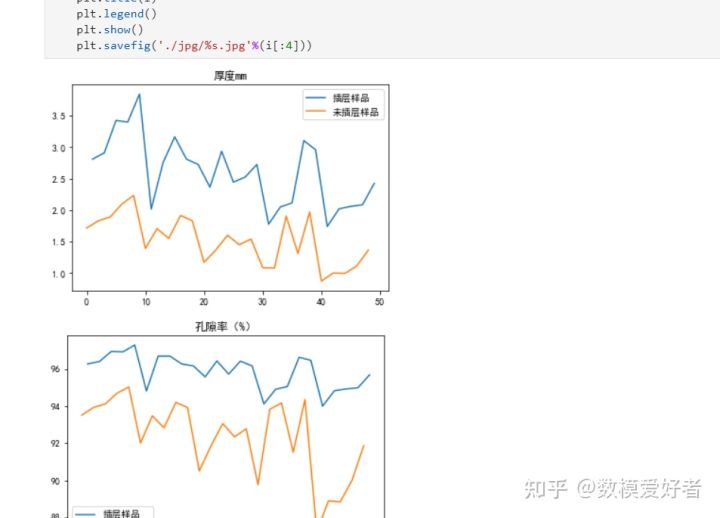
It is also possible to condense structural variables and product performance into 1-dimensional variables through pca dimensionality reduction for display
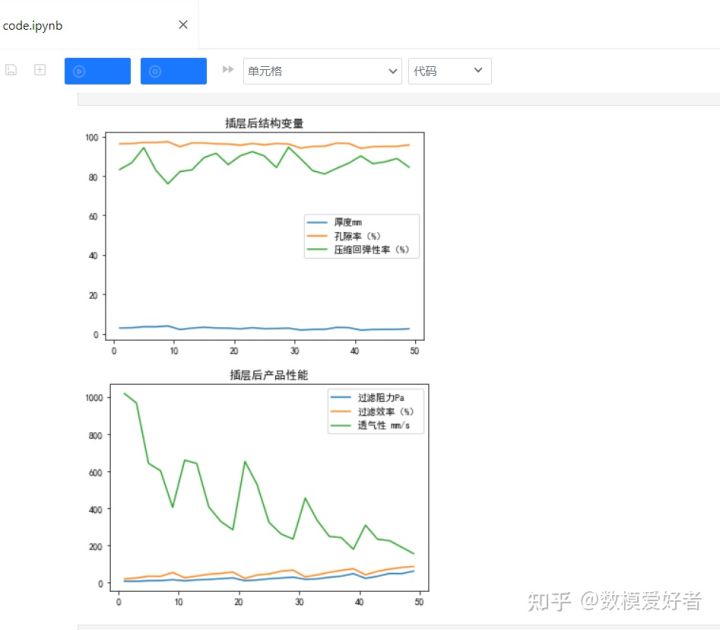
For the second question, the relationship between the intercalation rate, structural variables, and product performance can be analyzed through the gray correlation model;
Or use the correlation analysis to analyze the intercalation rate and structural variables, product performance correlation significant and coefficient situation
Note that the null value of the intercalation rate needs to be replaced with 0
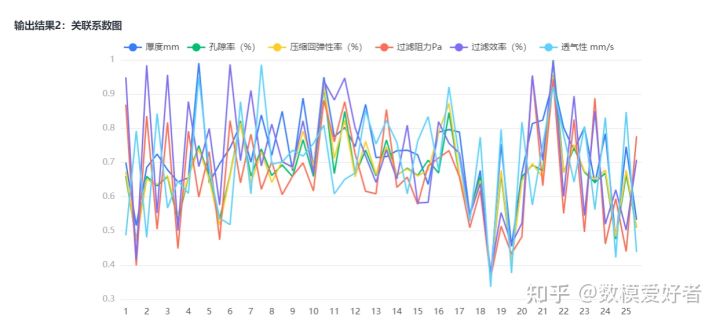
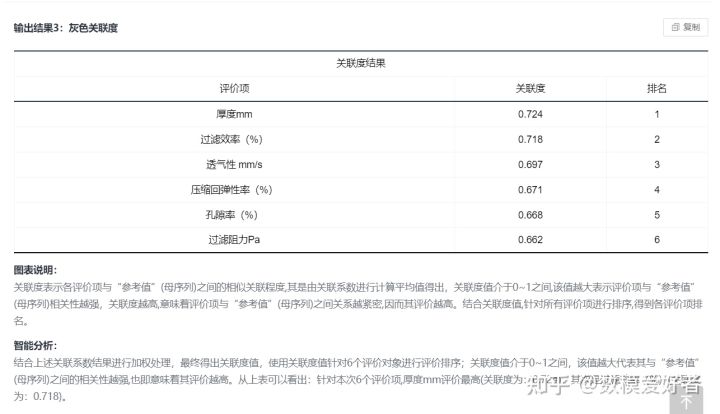
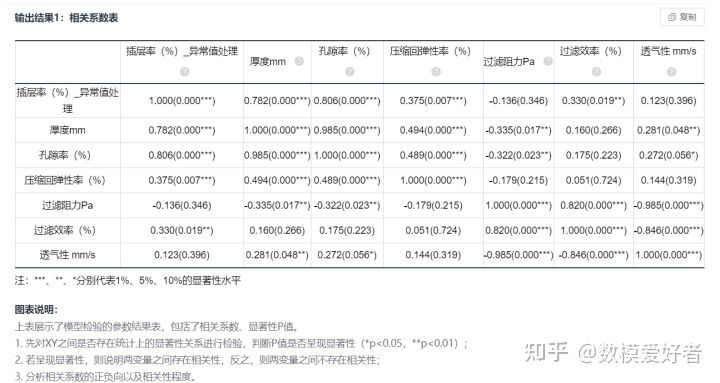
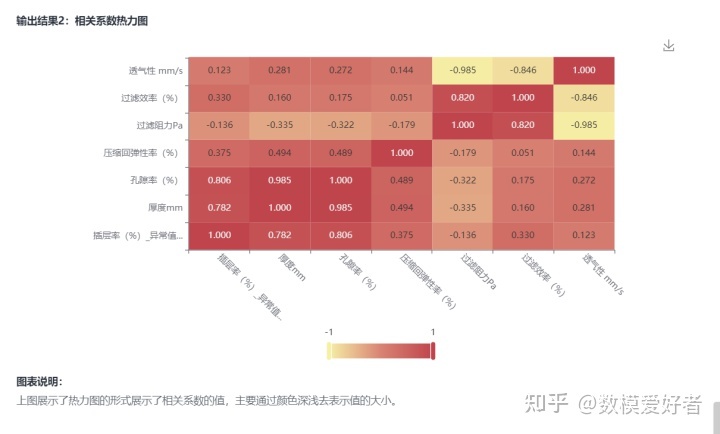
2.2 The second question
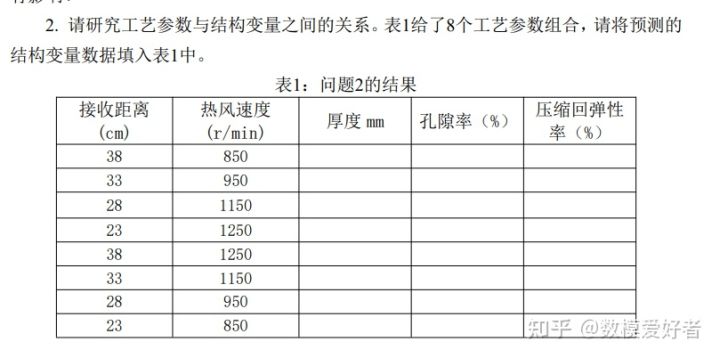
The second question is also broken down into two questions:
- Study the relationship between process parameters and structural variables
- Based on process parameter combinations, predicted structural variables
For the first question, you can refer to the first question in 2.1, and perform drawing analysis on the process parameters and structural variables after dimension reduction.

For the second small question, we put
X=Process parameter
Y1=thickness
Y2=porosity
Y3= Compression resilience
Construct 3 regression models and choose the best model for prediction.

2.3 The third question
3. Please study the relationship between structural variables and product performance, as well as the relationship between structural variables and product performance. Combined with the second question, when the process parameters are studied, the filtration efficiency of the product will reach the highest?
Break it down into 4 small questions:
- Study the relationship between structural variables and product performance
- Relationships Between Structural Variables
- relationship between product performance
- Research when the process parameters are how much, the filtration efficiency of the product will reach the highest?
For the first three small questions, you can directly refer to 2.1 and 2.2, so I won’t say more here.
For the fourth small question, we can have 2 ways to deal with it:
1. The method of planning and solving, max=filtration efficiency, find the combination of process parameters
2. Machine learning regression simulation method, first build a reliable model, then exhaustively combine, make predictions, and take the parameters corresponding to the highest filtration efficiency.
Here is an example of the second clock,
Build several models first, compare the differences, and get the best model.
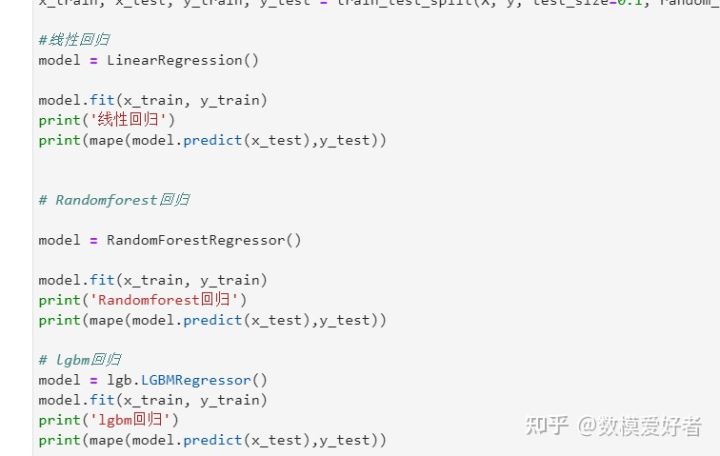
Then select the optimal model, exhaustively enumerate the process parameters, input the model for prediction, and get the following table

Then select the parameters corresponding to the highest filtration efficiency

2.4 The fourth question
4. In fact, product production needs to take into account various conditions and requirements. If the receiving distance is unlikely to be greater than 100cm, the hot air velocity is unlikely to be greater than 2000 r/min. According to the requirements of the application, the thickness should not exceed 3mm, and the compression resilience rate should not be lower than 85%. In addition, in order to prevent the rapid decline in filtration efficiency of melt-blown nonwoven filter materials due to the high filtration resistance that causes a large number of particles to block the pores, the product needs to pursue the goals of high filtration efficiency and low filtration resistance at the same time. May I ask how many process parameters can make the filtration efficiency as high as possible and at the same time strive to make the filtration resistance as small as possible?
2.4 Direct participation in 2.3, nothing more than you need to pay attention to 2 points:
- It is necessary to screen the data, the receiving distance is unlikely to be greater than 100cm, the hot air velocity is unlikely to be greater than 2000 r/min, the thickness should not exceed 3mm, and the compression resilience rate should not be lower than 85%;
- The upper limit of the receiving distance can be increased to 100cm, and the speed of hot air can be increased to 2000 r/min, see the detailed video explanation.